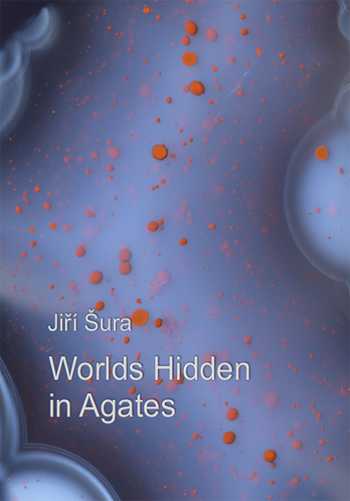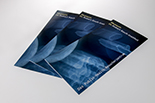Die 20. Kunstaustellung mit dem Titel "Worlds Hidden in Agates" findet vom 2. März bis zum 30. April in der Seestraße statt und zeigt Werke von Jiří Šura.

The author, Jiří Šura (1961), works as a geologist, performing geological exploration for civil engineering clients. Besides, he also works for the East Bohemian Museum in Pardubice, Czech Republic.
One of his favourite hobbies ever since childhood has been collecting rocks. The oldest specimens in his collection can be dated back to 1972. Agates, jaspers, flints and other cryptocrystallic varieties of silicon dioxide have been at the centre of his interest for the last 20 years. He looks for - and finds - them in places better- as well as lesser-known. After processing (washing, cutting, grinding and polishing), he looks for interesting details in polished surfaces of the stones and photographs of them. His first exhibition was in 2002. Since then, over fifty thousand visitors have appreciated his work.
The author says the following about the images presented:
“Serious agate collecting means trudging through hundreds of kilometres of ploughed fields or creeks and digging hard. An experienced collector is able to distinguish a piece of rock from a cobble that could actually be an agate. However, who knows for sure if there is really agate inside or just grey quartz?
The moment of truth comes when the stone is cut in half. It is not only the culmination of the collector’s expectations; it is quite literally a mystical moment. Imagine: three hundred million years have elapsed since the formation of the stone in the depths of the Earth and you are the first one who can see its internal structure. The realization that the atoms the stone is made up have most likely ‘seen’ the light of day for the first time in some five billion years sends a shiver down your spine. And if it is your lucky day and a beautiful agate appears in the stone it is one of the most beautiful feelings I know.
Some details in agates can resemble things present in either macro- or microcosm. We can see stars or nebulae in space, plants, cells, and structures below the cellular scale, microfilm slides or pieces of technology as well as various items from our everyday lives. But while we keep inventing more and more names for these amazing details in the stones, we only realise that we are actually looking into the depths of our own mind.
The ‘images’ presented are in fact only a few centimetres in size, in certain cases only a mere few millimetres. When I find it, I am trying to take as the best photo as possible, that will delight both our eyes and mind.
So when people ask me about classification of my photos into a kind of art, I usually answer ‘This question is not for me, because the actual author of these images is the Nature, the Earth’”.
Jiří Šura
*15. 3. 1961, Chrudim, Czechoslovakia
Geologist
Author graduated in 1985 at the Moscow Geological Survey Institute (MGRI), where he obtained his qualification of a mining engineer - geologist. He participated in the geological survey of the polymetallic and gold deposits in the Czechoslovakia from 1985 to 1991. Since 1991 he has been working as a private geologist.
He is engaged in geological surveys for civil engineering and in radon exploration. He also works as a geologist at the East Bohemian Museum in Pardubice, where he manages the geological collection and is engaged in natural science education. He is a member of several professional associations in the civil engineering, a member of the Astronomical Society, of the Czech Nuclear Society and a member of the several Mineralogical Clubs.
Selection of Work
Handbook of Visual Detecting for Radionuclide Sources in Iron Scrap, 1996.
Procedure for Radioactive Material Seizure. Recommendation of The State Office for Nuclear Safety, Prague. (Both in English and Czech, co-author, 2002).
Příroda východního Polabí (Nature of East part of Elbe Bassin, co-author, 2007).
Exhibitions
The World beneath our Feet. Pardubice (2006).
The Quartz and its Family. Installations in Pardubice (2008), Hradec Králové (2009), Beroun (2011), Valašské Meziříčí (2011), Ostrava (2013) and Bruntál (2014).
Universe in the Stone. Hradec Králové (2010), Pardubice (2018).
Images from the Depths, Nové Město na Moravě (2010).
Beauty of the Minerals. Rokycany (co-author, 2011) .
Quartz – The Magician, Dvakacovice (2013).
Worlds in the Stone, Prague (2016), Pardubice (2019 – 2020).
nach oben













